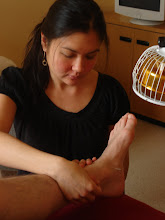Timothy R. B. Johnson and Judy Norsigian
FOR A symbol of what ails the US health system, look no further than hospital delivery rooms, where costly caesareans, many for non-medical reasons, are inching closer to a majority of all births.
Even though caesareans are associated with higher rates of complications than vaginal births, they are becomingly increasingly common. Problems range from infections, including the more serious antibiotic-resistant ones, to blood clots, prematurity, respiratory problems for the baby, and more complications with subsequent pregnancies. There is even a small but measurably higher risk of death for the mother.
Between 2000 and 2006, while the Massachusetts caesarean rate climbed from 16th to 10th highest among all states, the state’s ranking on neonatal mortality has slipped from 4th best to a tie for 9th. Six hospitals in the state have caesarean rates greater than 40 percent for first time mothers, yet none of these hospitals is designated as a high-risk center. So much for the argument that high-risk pregnancies are the reason for these rates.
There are also cost consequences for taxpayers — the caesarean rate for Massachusetts mothers on Medicaid is increasing at a faster pace than among privately insured mothers. Nationally, in 2008, average hospital charges for an uncomplicated caesarean section were $14,894, while such charges for an uncomplicated vaginal birth were $8,919.
What can we do to lower the caesarean rate? Considerable media attention has focused on how extreme obesity can raise the risk of having a caesarean, but more emphasis is needed on these system-based approaches:
■More hospitals need to institute policies that restrict the induction of labor, unless there is a good medical reason. Unfortunately, labor is now sometimes induced solely for the convenience of the physician or the mother, and labor induction increases the likelihood of a caesarean section in many women. Almost all the recent increase in late preterm (34 to 36 weeks) births was related to planned caesareans carried out too soon, and the rise in premature and low-birth-weight babies has required more expensive hospital-based care to address the medical problems of these infants.
■Obstetricians and hospitals should follow the new National Institute of Health recommendations to offer the option of vaginal birth after a caesarean for those women who want to avoid repeat surgery. As noted in a recent NIH press release, “Although as many as 60 percent of hospitals in some states routinely prohibit vaginal delivery by women who have had a caesarean section, that practice is out of step with current medical research.’’
Expanding this option would require that the American Congress of Obstetricians and Gynecologists amend a recommendation that hospitals have 24/7 presence of an anesthesiologist if they choose to offer vaginal births after a caesarean. Because of this recommendation, many hospitals concerned about liability refuse to allow them. Yet those same hospitals find it acceptable to call in an off-site anesthesiologist when mothers need an emergency caesarean for any other reason.
■Hospitals could expand access to nurse-midwifery care. In Boston, statistics for hospitals that care for women facing the same risk of complications show that hospitals with nurse-midwifery services tend to have lower caesarean rates than those without a significant midwifery presence.
In 2008, the two Boston-based hospitals without midwifery services (Tufts Medical Center and Beth-Israel Deaconess Medical Center) had overall caesarean rates of 37.7 percent and 42 percent respectively, while hospitals offering significant midwifery care averaged between 27 percent (Mt. Auburn Hospital) and 35 percent (Brigham and Women’s Hospital). Notably, Boston Medical Center — a hospital with both a large midwifery service and an at-risk population — had a caesarean rate of 30.1 percent.
Enhancing access to midwifery care might well be the most effective approach to safely reducing the overall caesarean rate — and could lead to significant cost savings and improvement in other priority areas such as breastfeeding. It would also address the impending shortage of obstetric providers. The Legislature should pass a bill to expand access to midwifery care in Massachusetts. We must finally make midwives more central in maternity care — as do all other countries whose birth outcomes are superior to ours.
Timothy R. B. Johnson, MD, is Bates professor and chair of the Department of Obstetrics and Gynecology at the University of Michigan. Judy Norsigian is executive director of Our Bodies Ourselves. ![]()


No comments:
Post a Comment